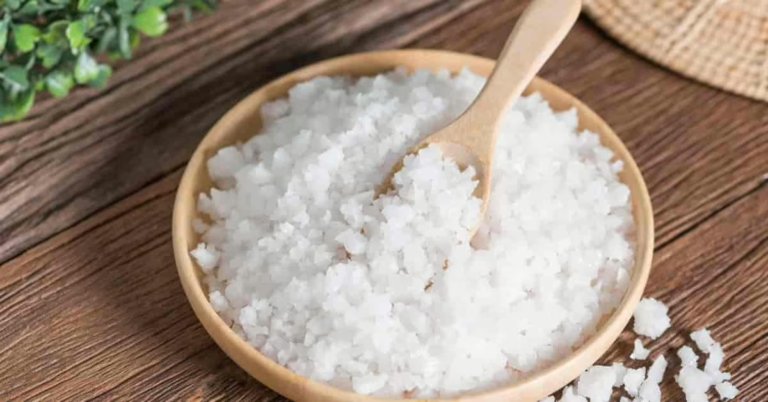Over Exfoliation Myths: ‘Scrub Harder’ Is Wrong
Why Your “Deep‑Clean” Routine May Be Sabotaging Your Glow
You wake up, splash your face, and feel those tiny bumps mocking you in the mirror. Out comes the gritty scrub—because if your skin still feels rough, you just haven’t scrubbed hard enough, right? Wrong. Dermatologists across India see a steady stream of women and men with unexplained redness, stinging, and sudden breakouts, all classic signs of over‑exfoliation. Whether you commute through the sticky lanes of Mumbai, fight the desert dust of Jaipur, or spend ten hours in the recycled air of a Bengaluru office, the marketing message remains the same: if your skin is dull, hit it harder
Unfortunately, your skin’s outer barrier—scientifically named the stratum corneum—has strict limits. This wafer‑thin armour keeps moisture in and germs out, but it depends on a delicate blend of lipids, proteins, and friendly microbes. Every time you sandpaper the surface, that protective wall crumbles like a brittle papad. Dehydration, sensitivity, and premature ageing follow close behind. In short, aggressive exfoliation often delivers the exact opposite of the glass‑skin promise. The mission of this article is simple: explain why less is more, offer a rescue plan, and help you reclaim a calm, glowing complexion. Read on, and give your skin the break it has been begging for.
Rough Scrubs = Baby‑Soft Skin

Nothing feels as instantly satisfying as sandy particles grinding away dead cells. In television commercials, smiling models glide colourful beads across perfect cheeks, implying that a little friction equals instant youth. Reality is less glamorous. Most walnut, apricot, or plastic beads are jagged under a microscope and create micro‑tears—cuts invisible to the eye yet deep enough for bacteria, pollution, and allergens to slip through. Imagine your skin as a sturdy brick wall. A harsh scrub chisels at the mortar until bricks wobble, inviting pests and rainwater. The entire structure weakens.
Signs of trouble include burning when plain water touches your face, sandpaper‑like texture, or makeup settling in flaky patches. If this sounds familiar, park the scrub on a high shelf. Replace it with a cushiony cleanser containing finely milled oatmeal or rice once or twice a week. Let the product, not your arm strength, do the work—soft circles for twenty seconds are plenty. Finish with cool water to extinguish inflammation, pat dry, and follow with a soothing moisturiser. Your skin will reward you with real smoothness instead of rawness.
Physical Exfoliation Nuance: Dermatologists sometimes approve a soaked muslin cloth or konjac sponge because the fibres swell when wet and glide over skin like silk. The secret is feather‑light pressure and brief contact—ten gentle strokes, then stop. Reserve any grainy paste, such as brown sugar mixed with honey, for elbows and heels where the stratum corneum is thicker and less prone to injury.
Daily Chemical Peels Are Always Safe

Acid exfoliation has transformed countless routines, and for good reason. Alpha‑hydroxy acids such as glycolic or lactic loosen the “glue” between dead cells, while beta‑hydroxy hero salicylic acid dives into oily pores to dislodge clogs. Used wisely, these ingredients fade marks and brighten tone. However, more is not better. Daily high‑percentage acids added to pollution, sunscreen filters, and the hard water found in many Indian cities equal a perfect storm that strips your barrier bare. Hyper‑pigmented spots, stinging, and orange‑peel texture can spring up in only a fortnight of misuse.
A safe rhythm depends on skin type and climate. If you have normal to oily skin and live in a humid coastal metro, limit acid nights to two or three each week, spacing them at least forty‑eight hours apart during sweaty summers. If your skin is dry or sensitive—common among people working long hours in air‑conditioned offices—dial usage down to once every seven to ten days. Always wrap the session with a thick barrier cream rich in ceramides. Finally, check product pH: a formula around 3.8 delivers results without the chemical burn.
pH and Timing Matter: The strength of an exfoliant comes from its free‑acid content, controlled by pH. Glycolic acid at ten percent and pH 3.9 can outperform fifteen percent at pH 4.5 because more molecules are active. Apply acids to completely dry skin, wait at least five minutes before layering other products, and sandwich acid nights between hydrating‑essence days so water is replaced as fast as dead cells are removed.
Oily Skin Needs Extra Exfoliation

Many of us equate oil with dirt, so the logical response to a shiny T‑zone is a stronger scrub. Sadly, stripping away sebum sends your sebaceous glands into panic. To defend the skin, they crank oil production into overdrive, leaving you slicker than before and still plagued with blackheads. Think of a camel denied water while crossing the Thar Desert. The moment it finds a pond, it drinks double. Your skin behaves the same way when starved of its natural moisturising factor.
Balance is the smarter route. Replace midday scrubs with blotting tissues or a splash of plain water. Use a lightweight salicylic acid toner no more than twice weekly to keep pores clear. Pair acids with niacinamide between two and five percent; this vitamin curbs surplus oil while strengthening the lipid barrier. Finish with a gel‑cream moisturiser. It may feel counter‑intuitive, but giving skin enough hydration convinces it that hoarding oil is unnecessary.
Sebum Science: Indian skin, regardless of shade, contains more sebaceous glands than northern European skin, making the urge to strip oil even greater. Yet a balanced lipid film actually discourages Malassezia yeast, the fungus behind “fungal acne” bumps on the forehead and jaw. Feeding skin with lightweight oils like squalane or hemp seed convinces glands to throttle back and starves the yeast of its preferred environment better than any extra scrub session could.
Expensive Tools Prevent Over‑Exfoliation

Every month a new sonic brush or silicone pad hits the market promising spa‑level cleansing at home. Packaging brags about “smart” vibration modes, medical‑grade fibres, and antibacterial silver ions. Yet the core action is still mechanical friction. When bristles spin thousands of times a minute, they scour the skin as aggressively as coarse apricot kernels. Your wallet thins out, your barrier thins out, and you end up in the buy‑use‑irritate cycle again.
If you genuinely enjoy gadgetry, follow two rules. First, keep speed on the lowest setting and limit sessions to twice weekly. Second, replace brush heads every three months and disinfect them weekly in warm soapy water to prevent bacterial build‑up. Better yet, invest your money in leave‑on ingredients like ceramides, panthenol, and peptides that rebuild skin rather than attack it.
Case Study: A twenty‑nine‑year‑old marketing executive from Pune bought a sonic brush hoping for glass skin. When redness appeared she assumed purging and cranked the speed to maximum. Two weeks later her cheeks were papery and stung under tap water. She switched to fingertip cleansing and a ceramide balm. Six weeks later her barrier was reborn—proof that high‑tech promises never override basic biology.
Quick Quiz: Is Your Skin Crying for Help?
Answer – Yes or No to each statement:
Water or moisturiser now causes a sharp sting.
Tiny red bumps or flaky islands appeared overnight.
Tightness persists after a hydrating serum.
Your complexion looks dull despite extra care.
Familiar products suddenly burn within seconds.
Three or more Yes answers equal a loud SOS from your barrier. Do not panic; repairing damage is entirely possible when you switch from offence to defence.
Three‑Step Rescue Plan to Heal an Over‑Scrubbed Face

You don’t need ten new products; you need a disciplined routine that calms, rebuilds, and defends.
Step 1: Cleanse Without Stripping
Morning: Use a pH‑balanced gel or cream cleanser with soothing aloe, green tea, or liquorice to remove overnight sweat without dissolving precious lipids.
Night: Double‑cleanse only on heavy sunscreen or makeup days. Otherwise, a single gentle wash clears dust and sebum. Massage for sixty seconds so surfactants break down grime instead of your rubbing motion doing the job.
Step 2: Treat and Rebuild the Wall
Focus on three superstar ingredients in this order:
• Niacinamide 5 % to quiet redness, refine pores, and boost ceramide production. Spread two drops over damp skin morning and night.
• Centella asiatica (cica) rich in madecassoside to speed healing and reduce itch. Tap a pea‑sized dollop before bed, especially on flaky zones.
• Ceramide‑cholesterol‑fatty‑acid cream acting like fresh mortar. Apply a generous layer after serums and allow full absorption. Affordable pharmacy brands often work as well as luxury jars.
Step 3: Protect Religiously
Ultraviolet light deepens post‑inflammatory marks left by over‑scrubbing and slows recovery. Spread a broad‑spectrum SPF 50 every morning, no excuses. Reapply at lunch if you commute on a bike, sit near sunny windows, or work under harsh lights. Add a wide‑brim hat and sunglasses. Protection is non‑negotiable; it’s the insurance policy for every other step.
Safe Exfoliation Schedule and Habit Tracker

The easiest way to avoid relapse is to schedule your acids like gym days.
Normal to oily skin, humid city: Monday rest; Tuesday night 2 % salicylic toner; Wednesday rest; Thursday night 5 % lactic serum; Friday rest; Saturday ten‑minute clay mask; Sunday rest.
Dry or sensitive skin, air‑conditioned office: Monday rest; Tuesday rest; Wednesday night 4 % polyhydroxy serum; Thursday rest; Friday rest; Saturday gentle 2 % salicylic clay mask; Sunday rest.
Golden rules for both: never exfoliate on consecutive days, skip acids three full days before and after salon facials or waxing, and trust your skin’s voice over any schedule. If the surface stings, insert extra recovery days and lean on barrier creams.
Lifestyle Boosters: Products do half the job; habits finish it. Aim for seven hours of sleep so growth hormone patches micro‑injuries, drink two litres of water to keep the dermis nourished, and practise five‑minute breathing drills to dial down cortisol—the hormone that stalls collagen synthesis. Each small discipline accelerates calming serums and keeps irritation away.
Long‑Term Vision and Community: After three stable months reintroduce a papaya enzyme wash every second Sunday. Monitor for seventy‑two hours before repeating. The goal is durable radiance, not a brief shine followed by repair marathons. Share this article with a friend who lives by “no pain, no gain.” When more of us adopt barrier‑first thinking, brands respond with kinder formulas and the whole community benefits.
Travel Troubleshooting: Flying, long train rides, and overnight buses expose your face to intense air‑conditioning that saps moisture. Pack a 50 ml barrier cream and dab a pea‑sized layer every four hours in transit. A quick spritz of panthenol mist before landing or arrival prevents that tight, itchy feeling and preserves your hard‑earned progress.
Key Takeaways and Your Next Move
Harsh is not helpful. Over‑exfoliation tears the barrier and invites irritation, pigmentation, and cystic breakouts. Acids need strategy, not spontaneity; match molecule, strength, and frequency to both skin needs and climate. Oil demands balance—gentle sebum regulation beats rebound grease. Gadgets are not magic; ingredient science tops marketing hype. Repair is attainable through kind cleansing, rebuilding with niacinamide plus ceramides, and disciplined sunscreen.
Ready to give your skin the TLC it deserves? Drop your biggest exfoliation mistake in the comments and sign up for our free “Skin Barrier 101” email series. You’ll receive a printable habit tracker and more actionable, science‑backed tips straight to your inbox. Begin the gentle journey today and wake up to skin that glows because it is healthy, not because it has been polished raw.







